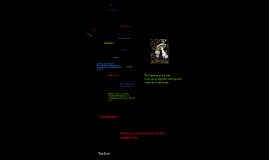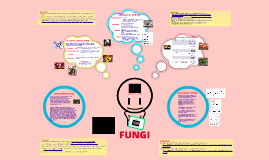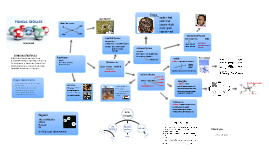FUNGI
Transcript: Dictionary.com. Dictionary.com, n.d. Web. 09 Dec. 2012. have no known sexual state, lost the ability to reproduce sexually "Dyeing 101: The Chemistry of Fibers â Soy, Milk, Chitin, Etc." The Roving Gnome RSS. N.p., n.d. Web. 06 Dec. 2012. Ganoderma lucidum have sexual spores that are borne externally on a club-shaped structure. •Ascomycota Zygomycota-common molds Telegraph Media Group Limited , . Fairy Rings . 2012. RHS Advisory TeamWeb. 9 Dec 2012. <http://www.telegraph.co.uk/gardening/gardeningadvice/6194037/What-to-do-about-fairy-rings-and-lawn-mushrooms.html>. "Science at FMNH -- Sexual and Asexual Reproduction in Fungi." TheFeildMuseum, 26 2011. web. 9 Dec 2012. <http://www.youtube.com/watch? Description of DIfferent Phyla "Ganoderma Tsugae." Messiah College. N.p., n.d. Web. 06 Dec. 2012. <http://www.messiah.edu/Oakes/fungi_on_wood/poroid%20fungi/species%20pages/Ganoderma%20tsugae.htm>. "Ganoderma Lucidum." Reishi Mushroom References. N.p., n.d. Web. 06 Dec. 2012. FUNGI Work Cited "Mycology â All You Need to Know." Mycology All You Need to Know. N.p., n.d. Web. 09 Dec. 2012. HOW MUSHROOMS CAN SAVE THE WORLD Sexually: •Haploid cells that have a single set of chromosomes, contain genetic material ZYGOSPORE: produces haploid spores that are genetically unique Four major phyla of Fungi based on the method of producing sexual spores Introduction/summary spores: Ganoderma lucidumWhen fungi grows Ganoderma lucidummost of it is undGanoderma lucidumerground with onlganoderma applanatumy a tiny bit of it bganoderma applanatumeing, the part you see above ground. It is interesting to know that fungi are more closely related to animals and humans then plants. They are a heterotrophic organism just like us, because almost all of them need to get oxygen from the environment. They are also decomposers because they recycle the nutrients for plants. Most are multicellular, and they move cytoplasm from one cell to another through the cell wall. Fungi is at risk because the symbiotic relationship they have with plants can be ruined because of climate change and pollution destroying them. Eukaryotic (a more complex cell type and the cell contains hereditary material and has a nucleus surrounded by membrane) Cell walls contain chitin (a chemical present in this type of organism made up of a hydrolysis reaction combined with carbohydrates and nitrogen) this acts as a vital and protective component of the exoskeleton Multicellular (more than one type of cell is present within) , except for yeast Heterotrophic an organism that relies on organic materials or other organisms for food, to live and grow Main body composed of hyphae (an element of the mycelium which is any vegative component of the fungus such as the leaf or stem) Sexual and asexual reproduction (meaning the way it reproduces may or may not involve the gametes) •Basidiomycota Reproduction: Ganoderma Applanatum Ex: "Fungi Imperfecti" Conrad, Jim. "The Many Kinds of Fungi." The Backyard Nature. N.p., 15 2011. Web. 9 Dec 2012. Asexually: FUNGI Ex: Club Fungi lackwell, Meredith, Rytas Vilgalys, Timothy Y. James, and John W. Taylor. 2012. Fungi. Eumycota: mushrooms, sac fungi, yeast, molds, rusts, smuts, etc.. Version 30 January 2012. http://tolweb.org/Fungi/2377/2012.01.30 in The Tree of Life Web Project, http://tolweb.org/ complex difference in lifestyle and genetic makeup environmental conditions trigger leads to dispersion of spores Reproductive Methods EX: Common Molds Ganoderma Tsugae asexual with flagellated spores and display a posterior flagella (a tail like structure). They are the primitive fungi and are mostly aquatic 2 different sexes + or - haploids fuse together to make diploid now 2 sets of chromosomes one from one parent increases genetic diversity fungi can adapt to environment changes now Characteristics Of Fungi BY: Diana, Sam, Jess, Megan, Sara :) Work Cited Nomenclature of Sample Organisms Work Cited Ex: Chyrids REDNECK fungus among us . 2010. Web. 9 Dec 2012. <http://www.youtube.com/watch?v=7eT-NXPRRFA>. "Ganoderma Applanatum." Messiah College. N.p., n.d. Web. 06 Dec. 2012. <http://www.messiah.edu/Oakes/fungi_on_wood/poroid%20fungi/species%20pages/Ganoderma%20applanatum.htm>. Work Cited Sexual reproduction involving the formation of a zygospore. N.d. Sinauer Associates, WH FreemanWeb. 9 Dec 2012 •Chytridiomycota largest group of fungi. Sexual spores borne internally in a sac called an ascus, but can also be external. Found in freshwater, marine, etc. piece of hyphae breaks off or it will release spores reproodutcive cells are tough spores can produce hyphae or yeast can withstand long periods of freexing or dry conditions. Mostly , living in soil or on decaying animal and plant material as they act as decomposers. Fungi is one of the most interesting kingdoms, and that is exactly why we chose to do our presentation on it. An interesting fact is that our province Ontario is the mushroom capital of Canada. Fungi usually grow in a ring pattern

















